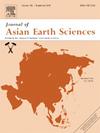Leucogranitic dikes emplaced at the lower-middle crust are particularly widespread in the Himalayas. How the magmatic activities evolved in relation to faulting along the Southern Tibetan Detachment system (STDS) remains debated. In this study, we investigate the multi-stage leucogranitic emplacement in relation to the structural evolution of the detachment fault in the Yalashangbo dome through detailed macro- and microscopic structural observations, LA-ICP-MS monazite U-Th-Pb dating, and whole-rock geochemical analysis of the leucogranitic dikes. We identified late syn- and post-kinematic granitic dikes from the dome. Timing of dominant STDS faulting is constrained from 27 to 17 Ma. Based on synthesis of geochronological and geochemical results of the present and previous studies, we suggest that two dominant stages of granitic emplacement occurred from Eocene to Miocene along the High Himalayas. An early stage of leucogranitic activity was probably ascribed to partial melting of mafic juvenile lower crust due to heating related to asthenosphere upwelling as the result of slab tearing or break-off during the Indian subduction. Emplacement of the leucogranitic melts subsequently softened the middle and lower crust and triggered the initiation of detachment faulting along the STDS as early as ca. 35 Ma. The large-scale detachment faulting likely led to intensive localized decompression melting of the lower crust. Contemporaneous detachment faulting in the lithospheric mantle allowed heat transfer from the asthenosphere to the lower crust, enhancing lower crustal melting and leading to generally higher crystallization temperatures in the late syn-kinematic granites than the post-kinematic ones.



